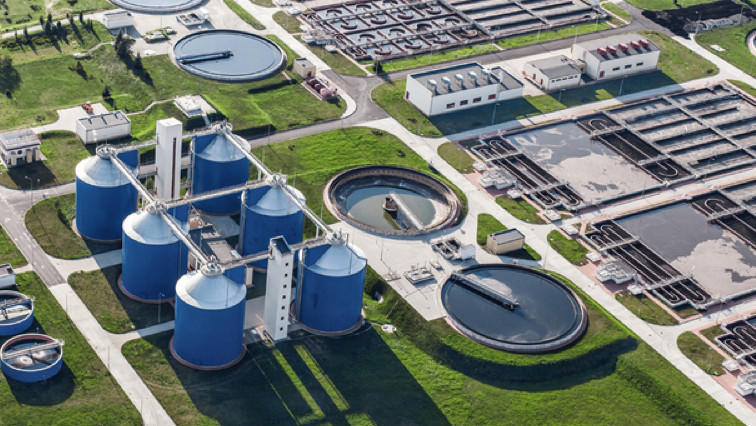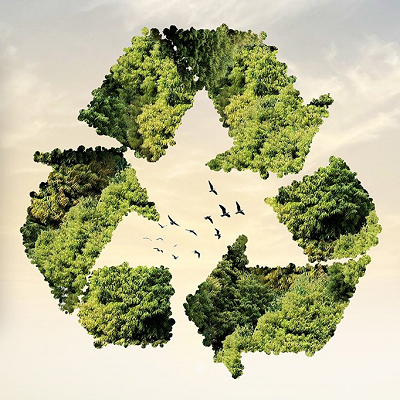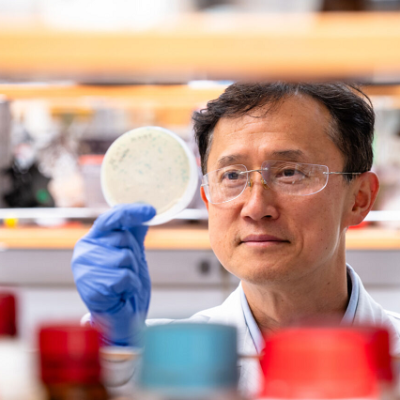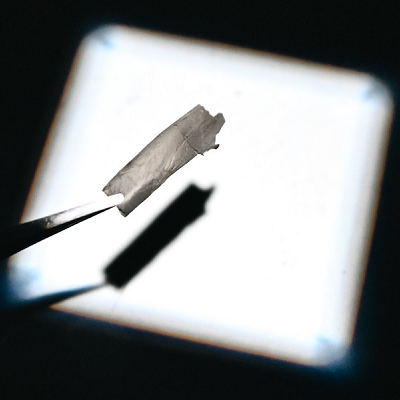In a wastewater treatment plant, engineered molecular-scale scissors chop up PFAS, toxic compounds that are so tough to break down that they’re called “forever chemicals.” Then, microbes digest the molecular scraps, clearing them from the water.
In a new project, researchers from the University at Buffalo and University of Pittsburgh are teaming up to design the approaches and tools that would make such a system possible. The group will seek to develop advanced catalytic carbon-metal nanomaterials that react with and snip PFAS (per- and polyfluoroalkyl substances), and to identify and isolate bacteria capable of consuming the sliced-up toxins.
What makes the project extremely compelling is that the team will use advanced mass spectrometry and computer modeling to understand what happens at each step of the process, says principal investigator Diana Aga, PhD, Henry M. Woodburn Professor of Chemistry in the UB College of Arts and Sciences.
“Many of the current treatments being developed are poorly understood,” Aga says. “The strength of our proposal is our capability to understand the degradation process so we can actually optimize it.
“We want to understand the mechanism of degradation: What’s happening as the PFAS are breaking down. Sometimes when these chemicals degrade, they get cut into two pieces, but these pieces are now more toxic or problematic. So yes, you got rid of Chemical A, but then you’ve produced B and C. In our research, we will know what the byproducts are, and how the PFAS are interacting with the nanomaterials and microbes. Our goal is to be able to predict exactly where the molecule will degrade, and how it will degrade. We can use this knowledge to optimize the degradation process, designing a highly efficient system.”
The study is funded by a $1.5 million grant from the National Institute of Environmental Health Sciences’ Superfund Research Program, part of the National Institutes of Health (NIH). Aga is leading the team, which includes three engineering faculty researchers: Nirupam Aich, PhD, from the UB School of Engineering and Applied Sciences; Ian Bradley, PhD, from the UB School of Engineering and Applied Sciences and UB RENEW Institute; and Carla Ng, PhD from Pitt’s Swanson School of Engineering.
A major environmental concern
PFAS have emerged as a major concern due to their persistence in the environment and their adverse effects on human health and wildlife. The compounds have been used in a wide range of products, such as firefighting foams, fabrics, non-stick cooking surfaces, food packaging and more.
“PFAS are everywhere: They are in rivers and lakes and in drinking water supplies around the world. They have a strong fluorine-carbon bond, so they don’t readily biodegrade in the environment. We’re working to develop a system that can efficiently remove PFAS in a way that’s cost-effective and that requires less energy,” Aga says.
The new project will focus on 15 common PFAS. But insights from the study could apply to other PFAS as well (there are at least 5,000 types of these compounds).
“By coupling experimental and computational approaches, you widen the field of both the chemical and biological systems that can be considered,” says Ng, assistant professor of civil and environmental engineering in Pitt’s Swanson School of Engineering. Ng is a UB alumna, having received her BS and MS in chemical engineering at UB.
Of materials and microorganisms
Any working system is still years away, but the team is excited to attack the PFAS problem using an interdisciplinary approach.
Aich’s lab will craft and test the performance of advanced nanomaterials that combine catalytic metal nanoparticles with graphene oxide nanosheets and have the potential to degrade PFAS. Bradley’s team will use microbial communities to try and break down PFAS components, and then identify useful bacteria and their function through cutting-edge metagenomics and transcriptomics.
Aga and her students will perform chemical analysis to check how the system is working, documenting what parts of the PFAS remain intact at different stages of the research. And Ng’s lab at Pitt will use computational modeling to identify what enzymes are responsible for PFAS biodegradation and understand how degradation is occurring, which will aid in optimizing the design of nanoparticles and singling out high-performing microbes.
“We’re trying to understand how our newly designed nanomaterials interact with PFAS and how they might be able to degrade them,” says Aich, UB assistant professor of civil, structural and environmental engineering. “PFAS are a major pollution problem, and one of the important challenges in environmental engineering is to develop new techniques to help solve this problem. Nanotechnology has shown promise to help solve this problem, and we are trying to leverage this in combination with biological treatment.”
As far as the microbes go, Bradley’s team will seek to collect samples from locations such as wastewater treatment plants and PFAS-contaminated soil, where environmental pressures may have promoted the growth of bacteria capable of degrading some types of PFAS.
“If bacteria don’t have a good food source, if they don’t have access to sugars or things that are easy to break down, they’ll try to figure out how to get energy from whatever’s there,” says Bradley, UB assistant professor of civil, structural and environmental engineering and faculty member in the UB RENEW Institute. “You see these really cool systems where bacterial cultures can feed off of and break down chemicals like tetrachloroethylene, which is used in dry cleaning. The first thing we need to figure out is whether this can work for components of PFAS, and if it can, could we leverage those communities or microbes to help completely break down toxic PFAS to harmless substances.”
Read the original article on University at Buffalo.







